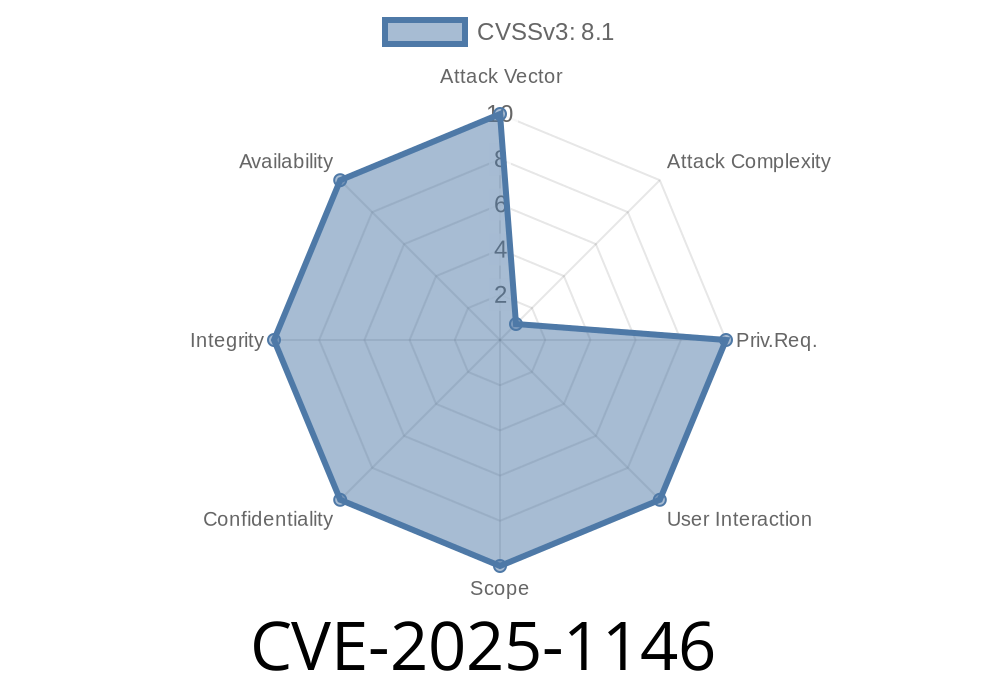CrowdStrike is a leading cybersecurity platform trusted by organizations around the globe. Its Falcon sensor is deployed widely, especially on Linux servers and within Kubernetes environments to provide endpoint protection, threat detection, and response. On February 18, 2025, CrowdStrike disclosed a significant security vulnerability tracked as CVE-2025-1146 impacting their Falcon sensor for Linux and related components. This post will break down what happened, how exploit works, and what you should do if you’re impacted.
What is CVE-2025-1146?
This vulnerability is a validation logic error in the TLS routine used by Falcon sensor for Linux, Falcon Kubernetes Admission Controller, and Falcon Container Sensor. Essentially, when these sensors establish a secure connection to the CrowdStrike cloud, the software incorrectly validates server certificates. This faulty check can allow an attacker controlling network traffic (think: on the same corporate WiFi, a rogue router, or even compromised internal infrastructure) to perform a man-in-the-middle (MiTM) attack.
What’s at Risk?
- Confidentiality: Sensor may accept a fake server as CrowdStrike, exposing trusted communications and possibly sending data to an attacker.
- Integrity: If the attacker modifies data, the sensor might accept malicious configurations or commands.
- Security Operations: Such access could let attackers disable, blind, or otherwise disrupt endpoint defenses.
How Does the Exploit Work? *(Explained Simply)*
The heart of this flaw is incorrect server certificate checking during TLS. Proper TLS verification checks:
Does it match the domain you’re talking to?
If these checks are skipped or done wrong, an attacker on the network (who can intercept your traffic) can present their own certificate and “pose” as the CrowdStrike Cloud.
Example Exploit Scenario
1. Attacker controls network path (e.g., via ARP spoofing, compromised DNS, or being on an open WiFi).
Due to validation bug, the sensor accepts the fake cert.
5. Attacker can now read or modify data sent from and to the sensor, inject commands, or block CrowdStrike protections.
Exploit Proof-of-Concept (POC)
The following is a hypothetical code snippet showing how an attacker might set up a malicious proxy. *Note: This is for educational purposes only!*
Python MitM Proxy Example (With History Library)
# Simple HTTPS proxy using mitmproxy (https://mitmproxy.org/) to intercept sensor traffic
from mitmproxy import http
def request(flow: http.HTTPFlow) -> None:
if "cloud.crowdstrike.com" in flow.request.host:
print(f"Intercepting request to {flow.request.host}")
# Optionally inspect/modify traffic here
You set this up on a machine that can intercept the sensor's network traffic (by controlling DNS, routing, or ARP).
The *actual* vulnerability is that the sensor will accept the TLS certificate that mitmproxy generates, even though it’s not signed by CrowdStrike’s real CA.
Official References
- CrowdStrike Security Bulletin
- NIST CVE Database Entry for CVE-2025-1146 (pending)
- CrowdStrike Release Notes (7.06)
How Was It Found?
CrowdStrike says this bug was found internally, by their security review process—not by external white-hats or through observed attacks in the wild. Their threat hunting teams found no evidence that anyone exploited this flaw before the fix.
Update all affected sensors to version 7.06 or higher.
- Download Latest Linux Sensor
- Confirm on all Linux/Kubernetes/Container environments.
Audit outgoing network connections from your hosts for any unusual patterns.
- Block untrusted devices from MITM positions (e.g., segment guest WiFi, lock down switch/router management, use VLANs).
Summary
CVE-2025-1146 is a serious logic flaw in how CrowdStrike’s Linux sensors verify secure connections. While there’s no sign of exploitation, a MiTM attack could have devastating consequences for anyone running outdated sensors. This is a strong reminder: even top-tier security vendors can make simple mistakes in critical parts of their code (like TLS verification).
If you use CrowdStrike Falcon on Linux or in Kubernetes, update ASAP. And remember—the security of security tools is everyone’s responsibility!
Stay safe! If you need help patching or auditing systems, reach out to your CrowdStrike rep or IT security team.
Further Reading
- Understanding Man-in-the-Middle Attacks
- TLS Best Practices Cheat Sheet
Timeline
Published on: 02/12/2025 19:15:09 UTC
